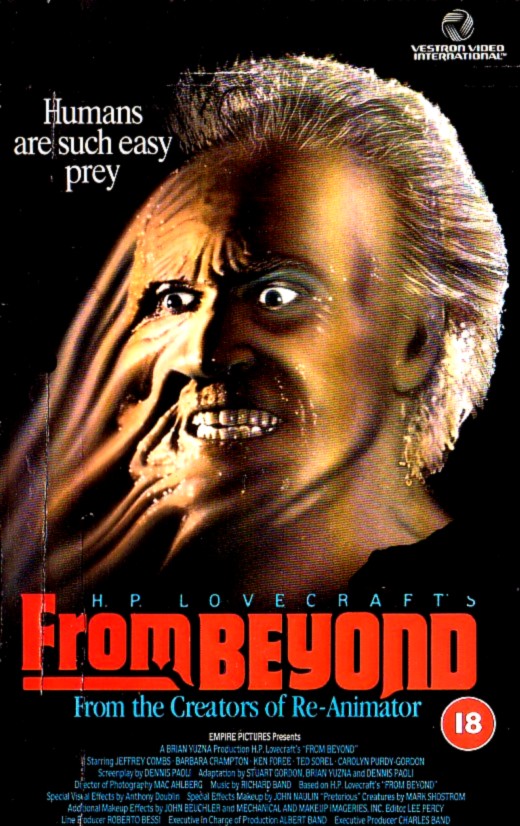
Big Brother made a big impact on
reality television when it began, but the response of filmmakers has been
fairly sparse – only the Charlie Brooker-scripted Dead Set and the Christmas
special to Extras has dealt with it in any interesting way. Now Matteo Garrone,
whose previous film Gomorrah took a comprehensive and fascinating look at the
underdogs of the Neapolitan crime world, has made a film about the ‘Big Brother
effect’, in the process winning the Grand Prix at the Cannes Film Festival last
year.
Luciano (Aniello Arena) is a
fishmonger in Naples who lives modestly with his wife (Loredana Simioli) and
kids. Always looking for a way to improve his situation, he is involved in a
few petty scams, aided and abetted by his wife. Urged by his family to try out
for Grande Fratello, the Italian Big Brother, because of his ability to
entertain everyone around him, he auditions. However, during the selection
process and the long periods of time waiting for the phone to ring, Luciano
becomes obsessed with the bright future that is surely coming…
Opening with a fantastic aerial
shot surveying Naples before zoning in on the carriage of some newly-weds on
the way to their plush, over-the-top wedding reception, Garrone is playing from
the beginning with fantasy and reality. The first few frames look gritty and
urban but as the camera starts to follow the wedding carriage, there is a hint
of airy extravagance. Anyone familiar with Fellini will recognise the sound of
a breeze on the soundtrack, marking the passage from reality to fantasy. And
then Alexandre Desplat’s score kicks in – quirky and ridiculous but somewhat
recognisable.
The wedding is tacky and overdone with ribbons being
cut and pigeons being released, a crowd of well-wishers bustling and shouting
and taking awkward group photographs. However, as the wedding ends and the
guests return to their homes, the film moves again into a more sombre, more
realistic style in a nice touch suggesting that Garrone is in a more
compassionate, humanist mood. The exterior of the apartment building looks
stagy and brightly, cinematically lit, but when the camera enters each
apartment, everything is a Lynchian green and mundane, even bleak. Public
events, like a wedding, are opportunities for everyone to escape from reality,
and as a performer it is here where Luciano excels, but in the end we all have
to return to the everyday drudge. That Luciano, having caught a glimpse of fame
and fortune, cannot settle back into his everyday routine is the main subject
of Garrone’s film.
Luciano is an unusual character
and the fact that he is likeable to entirely down to Arena’s fantastic
performance and Garrone’s careful, sensitive handling of the film. It is very
similar to Luchino Visconti’s Bellissima, except for the key fact that Anna
Magnani is obnoxious and irritating while Arena is thoroughly endearing and
tragic. Luciano gives up his fish stand and more, all his long term prospects
sold in pursuit of his five minutes. Garrone romanticizes Luciano’s hopes and
dreams - Desplat’s brilliantly adaptable score recalling here the good times of
Cinema Paradiso – managing so well that you end up hoping that Luciano gets the
call even though you know that the show is awful and Enzo (Raffaele Ferrante),
a former Big Brother contestant, is clearly having a tough time of it. At one
point, we see Enzo suspended ridiculously from a wire, swinging above the dance
floor in a nightclub, something that might be approaching caricature if it were
not so grimly plausible. Even though we know that Big Brother is not ideal for
Luciano, we nonetheless wish him luck because he wants it so much.
Hence, a very funny prank midway
through the film is, in a way, infuriating – every disappointment takes a toll
and every silver lining rekindles one’s hopes. This is beautifully expanded
into a comment on that ultimate ‘hope’, the afterlife, when Luciano mistakes
two mourners for Big Brother scouts. Raised on Hollywood films, just like
Luciano (one can imagine), we are unwilling to come to terms with the
possibility of failure, again, just like Luciano. Ultimately, the film is about
everyone’s hopes and dreams – the comment on today being the fact that our
dreams are often as shallow as reality TV fame.
However, despite the somewhat
garish colour scheme and the skewed perspective, Reality is a deeply
compassionate film which does not laugh at Luciano, instead sympathizing with
him, since his ambition is such a long-shot. Even Enzo (Luciano’s future) is a
tragic figure, hurriedly visiting two weddings almost at once, always working
and always surrounded but nonetheless he does seem to genuinely help Luciano,
taking photos with Luciano’s daughter and helping him get an audition even
though he is already late. And though the film takes a darker turn during the
final act, it never judges or mocks, delivering an ending that is graceful,
kind and note-perfect.
Reality seems like a typical satiric look at our obsession
with celebrity and there are moments when it is – when one auditioning hopeful
is asked why she wants to be on Big Brother, her reply, “to be rich and
famous”, is rewarded for being a rare sincere answer. However, Reality proves
to be unexpectedly likeable and kind-hearted, an insight into a man who becomes
obsessed with celebrity (he is briefly, horrifyingly glimpsed in a DIY diary
room) which aims for universal truths rather than easy targets. Against
expectation, it makes you care.












